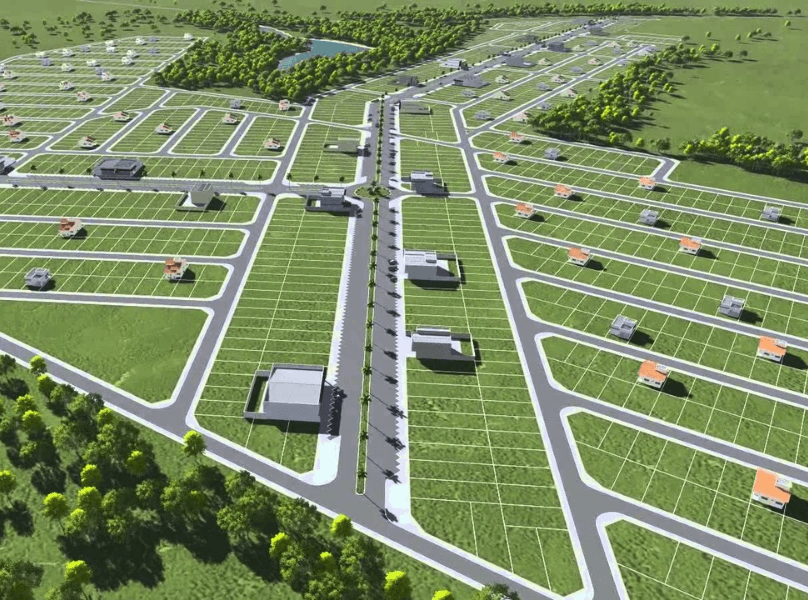What you need to know about buying a section in a subdivision
There’s something exciting about building a brand new home in a new subdivision. It gives you the chance to be part of a new neighbourhood with new surroundings in a home that you’ve had input in from the ground up. With more housing needed all over Taranaki, we are seeing an increase in new subdivisions starting to pop up on the outskirts, and in the centres, of our local townships. These new developments not only include newly built homes but also walkways, playgrounds and in some cases even commercial buildings are built to service the newly developed communities.
It’s not only new communities that are growing in size, already developed areas are seeing an increase in sections for sale, as people are starting to divide their sections to free up capital. Taranaki has been seeing its fair share of both larger subdivisions appear, as well as smaller subdivisions, as the price of land increases and the demand for space to build new homes intensifies.
Subdividing is the process of dividing land for separate ownership and can be a complex process for any developer. So when buying a section in a subdivision, it is important to understand the different types of land ownership contracts and what they might mean for you. Depending on the size and location, the most common forms of subdivision are freehold (free simple), cross lease, unit title and rural subdivision. Let's break these down.
Freehold Subdivision
Also known as a Free Simple Subdivision, this is the most common type of subdivision. The land is subdivided to create separate Certificates of Title for each new lot. The new pieces of land are then solely owned by those named on the Certificate of Title, which is the person purchasing the land to build on.
Cross lease subdivision
The total area of land is owned in equal shares by all of the owners of the cross lease. It is an inferior form of ownership compared with Freehold as you must always consult with the other landowner and gain permission for any changes to the shape of the building and the Certificates of Title.
Unit Title Subdivision
This form of subdivision is used mainly when one building is over another i.e. an apartment complex. Unit titles can also be used for individual houses, joined houses or a commercial block of buildings where the owners share common land. In each case, a Body Corporate (owners committee) is set up to administer the property, and all property owners become members of the Body Corporate.
Rural Subdivision
Similar to the subdivision of the land around your house in town, larger rural blocks can be subdivided as well. Individual Certificates of Title for smaller rural or lifestyle blocks can then be obtained. There will be specific rules in the local Council District Plan that will govern how you can subdivide rural land and the requirements to be met.
In new subdivisions, it can be hard to imagine what the area might look like in a few years time and what neighbouring houses may look like. Sometimes the unknown can be exciting but when it comes to buying a section to build your dream home on, the unknown can also be a scary thought. Below we have outlined our key must-knows when it comes to buying a section in a subdivision.
Buying land in a subdivision
Buying land in a new subdivision can offer great benefits, as you are able to build a home from scratch. New build homes offer lower maintenance and the home can be built exactly as you envisioned. But when it comes to buying your section, it does pay to do your research.
Learning more about the development is a great place to start, who was the developer and what are their credentials and history of their previous subdivision? Are there covenants in place to guarantee a certain standard of build in the neighbourhood?
In the majority of cases, the sections within these new subdivisions are usually sold through a real estate company and there will be a specialist available that can answer many of your questions. Communication with the real estate agent is where you will learn more about the details of the development such as if the sites are serviced and include power and water. Learning if these are included in the price of the property can save you additional costs later down the line.
Getting in early into a new subdivision can also work in your favour, it pays to be quick as doing so can present opportunities for good capital gains, and to have your choice of section. As the subdivision gains momentum and popularity, the land sale prices and build costs tend to rise.
Another important factor to be aware of is that new subdivisions can also come with their own set of design guidelines and pre-build approvals. Style of homes, colours, materials and landscaping limitations are common to keep a high standard, these are commonly called covenants.
Buying a section in a subdivision checklist
If you’re thinking of buying a section within a subdivision it can be good to have a checklist of questions for you to cover off. We’ve used our expert knowledge in this area to give you a helping start.
Does the house plan that you want suit the section?
The first thing you should look at is the size of the section and compare it to your dream house design. Does the house plan you want suit your section in terms of size? If it’s a 5 bedroom family home you’re after, is the section large enough to fit your needs? Will there still be enough space around it for that outdoor space you want? The same goes for where the section is positioned, if you’re after a home that has a large outdoor entertaining area, you want to make sure that your section is located in a spot that maximises as much sun as possible.
Tip: If you find a section that you love, go back and visit it during different times of the day and check the sun positioning.
Check if the land has covenants
Covenants can limit your new build to a specific look and style, including what materials and colours you can use for external features. Covenants can also dictate the placement of garages and fences, including how high you are able to build them. Washing lines are also a common topic and can be restricted to the back or side of the property which is out of sight from the roadside and neighbours.
Another common covenant is landscaping, some new subdivisions state that landscaping needs to be completed before you can move into the property, or in some instances, landscaping must be done within a certain timeframe. Some restrictions can even include whether the new landowners can keep chickens!
Get a LIM report
A Land Information Memorandum (LIM) is a report that provides a summary of the current property information held by the council on the day the LIM was produced. It is a legally binding document that states everything the council knows about the history of a property, and any issues that may affect the property. For more information about what is included in a LIM report head to the New Plymouth District Council website.
Check the copy of title
It is common for a section to be sold without a title, some new build homes have been known to be delayed due to the land title not being signed off and existing without a title for quite some time. Until you have a title you are unable to build.
Titles can take a while to process so it is important to factor this into your purchase contract if already not available. Always get a lawyer to review the title and purchase contract of any section before you buy it.
Get a geotechnical report
A geotechnical report will identify the type of foundations that will be required to build on the land. Most councils require a geotechnical report to be included with all building consent applications, in most cases the developer should have carried this out and you should be able to access this by speaking with the real estate agent.
If there is one piece of advice to anyone looking to purchase a section is to do your due diligence, and communicate with the real estate agent. This isn’t their first rodeo (and if it is we suggest seeking assistance from another salesperson) and they will be able to help answer all your questions and offer professional advice and accurate information.
Check out our latest section and subdivision listings to see what's currently on the market, or if you would like to talk to our McDonald Real Estate section sales expert then contact us today.






